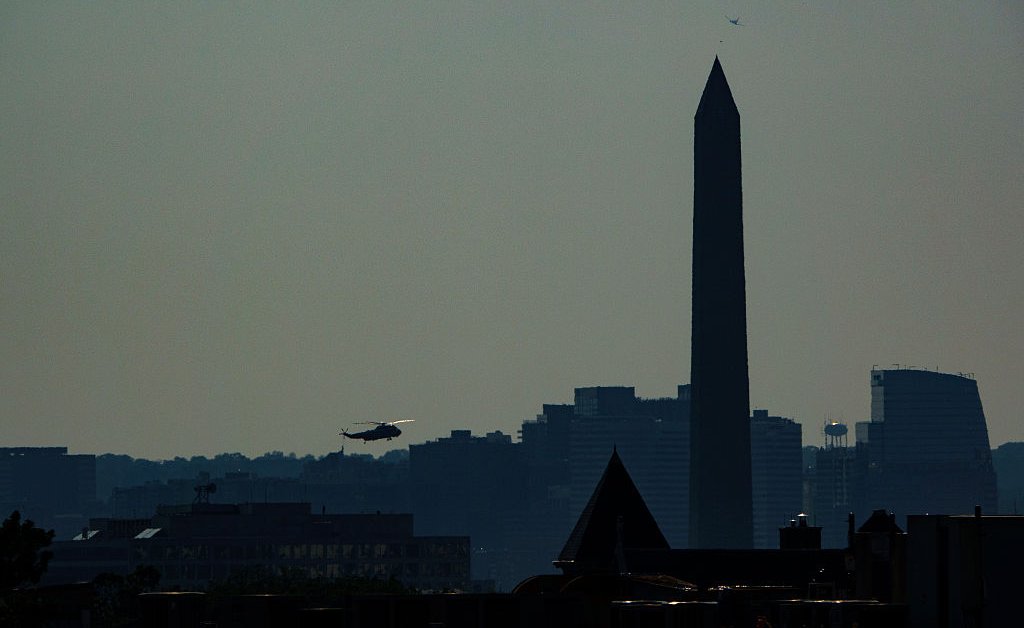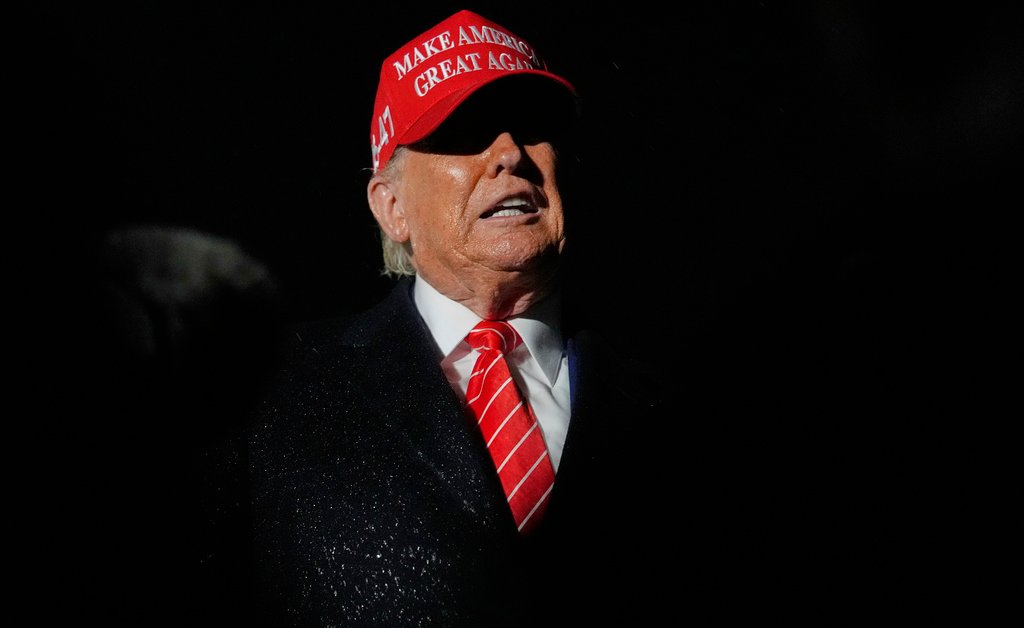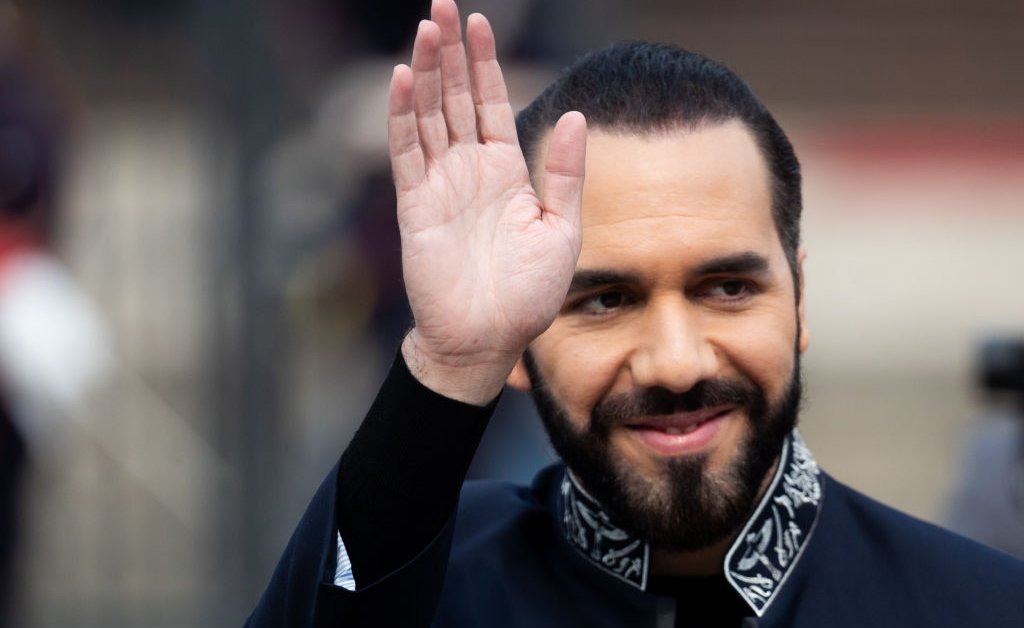The alleged assault of a Trump Administration staffer known as “Big Balls” has prompted the President to threaten a federal takeover of Washington, D.C., to address what he labeled the district’s “totally out of control” crime problem.
Donald Trump posted on his Truth Social platform on Tuesday a photo of a bloodied, shirtless Edward Coristine, one of the young engineers hired by Elon Musk’s Department of Government Efficiency earlier this year, claiming that he was “beaten mercilessly by local thugs.”
The large-testicles-nicknamed 19-year-old, who reportedly used to provide “tech support to a cybercrime ring,” became a special employee of the Social Security Administration in May.
Marko Elez, a fellow former DOGE staffer who resigned from the government amid controversy over racist social media posts before being quickly rehired, said he took the photo of Coristine.
Two teens arrested
According to a police report obtained by Wired, Coristine was allegedly assaulted by a “group of approximately 10 juveniles” early Sunday morning. According to the report, Coristine was walking with his “significant other” Emily Bryant toward their car when he “saw the suspects approach and make a comment about taking the vehicle.” Coristine reportedly “pushed” Bryant into the car before being beaten by the suspects. When officers patrolling the area approached, the suspects fled by foot, and two were caught and positively identified by the victims, the report says.
The Metropolitan Police Department announced Tuesday that the two apprehended suspects were a 15-year-old male and a 15-year-old female, both of Hyattsville, Md. They were arrested and charged with unarmed carjacking.
In Trump’s post about the incident, he complained that minors ought to be prosecuted and “locked up” as adults. “Local ‘youths’ and gang members, some only 14, 15, and 16-years-old, are randomly attacking, mugging, maiming, and shooting innocent Citizens, at the same time knowing that they will be almost immediately released. They are not afraid of Law Enforcement because they know nothing ever happens to them,” he said, “but it’s going to happen now!”
Trump calls for federalization
Trump used the incident to renew his calls for the federalization of D.C., warning: “If D.C. doesn’t get its act together, and quickly, we will have no choice but to take Federal control of the City, and run this City how it should be run, and put criminals on notice that they’re not going to get away with it anymore. Perhaps it should have been done a long time ago, then this incredible young man, and so many others, would not have had to go through the horrors of Violent Crime. If this continues, I am going to exert my powers, and FEDERALIZE this City.”
Musk, the President’s one-time ally turned opponent, also posted about the incident, agreeing with Trump’s assessment: “It is time to federalize DC.”
Crime in D.C.
Republican leaders have long used incidents of violence in D.C. to paint an example of Democratic strongholds suffering from crime. (D.C.’s population is overwhelmingly Democratic and it has supported the Democratic ticket in every presidential election since 1964, after the 23rd Amendment allowed D.C. to participate in presidential elections.)
In 2023, D.C. recorded 274 homicides, the most since 1997. Carjackings also doubled that year.
But latest D.C. police statistics show that crime has been on the decline. Year-to-date violent crime, as of Aug. 5, is down 26% compared to the year before, and the 2024 figure dropped 35% from 2023.
The Home Rule Act
In a Cabinet meeting at the White House in July, Trump said: “We have tremendous power at the White House to run places when we have to. We could run D.C. I mean, we’re … looking at D.C.”
Any attempt to federalize the national capital, however, would require the suspension or repeal of the District of Columbia Home Rule Act of 1973.
Washington, D.C., was established through a political compromise as a federal district in 1790. It used to be governed directly by Congress and federal appointees, but in 1973, Congress passed the Home Rule Act after the district’s residents pushed for control of their own affairs.
The Act established an elected local government including a mayor and a 13-member council that would oversee the district’s affairs. But according to the act, Congress still “reserves the right, at any time, to exercise its constitutional authority as legislature for the District.”
Some Republican lawmakers have pushed to repeal the Home Rule Act, decrying Democratic Mayor Muriel Bowser’s supposed incompetence. In February, Trump threw himself behind those efforts, saying while aboard Air Force One, “I think we should take over Washington, D.C.—make it safe. People are getting killed, people are being hurt.”
Trump could test the strength of the Republican Party’s slim House and Senate majorities by trying to repeal or suspend the Home Rule Act. But for now, the President and his allies have resorted to other methods to exert some semblance of control over D.C. In March, he issued an Executive Order establishing the “D.C. Safe and Beautiful Task Force,” an interagency panel that would coordinate with local officials to boost law enforcement and further beautify the district. The same month, Congress also docked the district’s budget by $1.1 billion.
“For 50 years, D.C. home rule could count on stout defense from the White House and majority support in Congress,” wrote former Washington Post opinion contributor Colbert I. King in February. “Even in the worst-case scenario of a D.C. home rule repeal bill passing the House, a Senate filibuster would surely have prevented its final passage.”
“But political dynamics have changed,” King wrote. “The guardrails are gone.”








